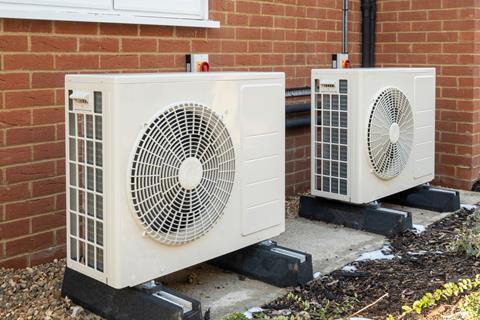The housebuilder has a ‘four-stage roadmap’ to decarbonise its operations
Housebuilder Taylor Wimpey has committed to achieving net zero by 2045, ahead of the government’s 2050 target.

The UK’s second largest housebuilder has published a ‘four-stage’ roadmap, which it has developed with consultancy the Carbon Trust, to achieve its ambition.
It said the plan will decarbonise its operations, supply chain and customer homes whilst reducing absolute emissions by at least 90%.
Jennie Daly, chief executive at Taylor Wimpey, said: “I am pleased that we have set out our target to become net zero by 2045, five years ahead of regulation – and more importantly, that we have a credible plan to get there.
The housebuilder said it was targeting net zero operations in its business by 2035, a net zero “value chain” - materials, suppliers and subcontractors - by 2045, and the roll-out of zero carbon ready homes from 2025, for which build trials are already underway.
Dominic Burbridge, director at the Carbon Trust, which has been working with Taylor Wimpey since 2011, added: “Committing to net zero is essential for any company that is serious about addressing the climate crisis. Now, with their ambitious net zero target they are positioned to play their part in the transition to a low carbon economy.”
Burbridge pointed out the housebuilder had been the first UK large housebuilder to obtain the trust’s ‘standard for carbon’, which is a certificate intended to help organisations work towards net zero, in 2017. Taylor Wimpey’s road map was drawn up according to the requirements of the Science Based Target initiative’s (SBTi) Corporate Net Zero Standard, and has been submitted for validation by the SBTi, which the business expects to receive at some point this year. The SBTi is a partnership between CDP environmental charity, the United Nations Global Compact, World Resources Institute (WRI) and the World Wide Fund for Nature (WWF).
The housebuilder has an A-rating in the latest CDP Climate Change benchmark, and is currently piloting technologies on-site such as air source heat pumps, infrared heating, electric boilers, underfloor heating and triple glazing.
It has reduced emissions intensity by 51% since 2013 and through its 2021 environment strategy the firm has already set itself ambitious targets on climate change, nature and resources up to 2030.
In 2019 the UK became the first major economy in the world to legislate a target to reach as close to net zero emissions by 2050.










No comments yet